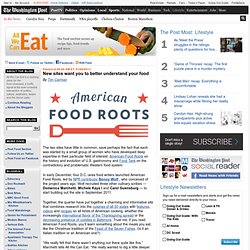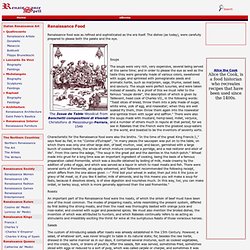

50 States - American Food Roots. New sites want you to better understand your food - All We Can Eat. The two sites have little in common, save perhaps the fact that each was started by a small group of women who have developed deep expertise in their particular field of interest: American Food Roots on the history and evolution of U.S. gastronomy and Food Tank on the contradictory and problematic Western food system.

In early December, four D.C. -area food writers launched American Food Roots, led by NPR contributor Bonny Wolf, who conceived of the project years ago. Mark Bridge. Savoring history's repast. Discovering flavors not lost but forgotten. JRK Familly Outdoors. ManCaveMeals. Renaissance Food. Renaissance food was as refined and sophisticated as the era itself.

The dishes (as today), were carefully prepared to please both the palate and the eye. Soups The soups were very rich, very expensive, several being served at the same time; and in order to please the eye as well as the taste they were generally made of various colors, sweetened with sugar, and sprinkled with pomegranate seeds and aromatic herbs, such as marjoram, sage, thyme, sweet basil, and savoury. The soups were perfect luxuries, and were taken instead of sweets. As a proof of this we must refer to the famous "soupe dorée", the description of which is given by Taillevent, head cook of Charles VII., in the following words: "Toast slices of bread, throw them into a jelly made of sugar, white wine, yolk of egg, and rosewater; when they are well soaked fry them, then throw them again into the rosewater and sprinkle them with sugar and saffron. " Food Timeline: food history research service.